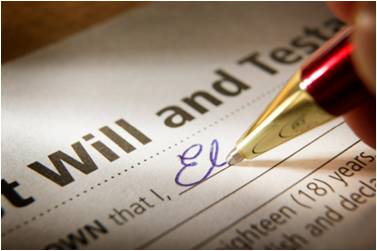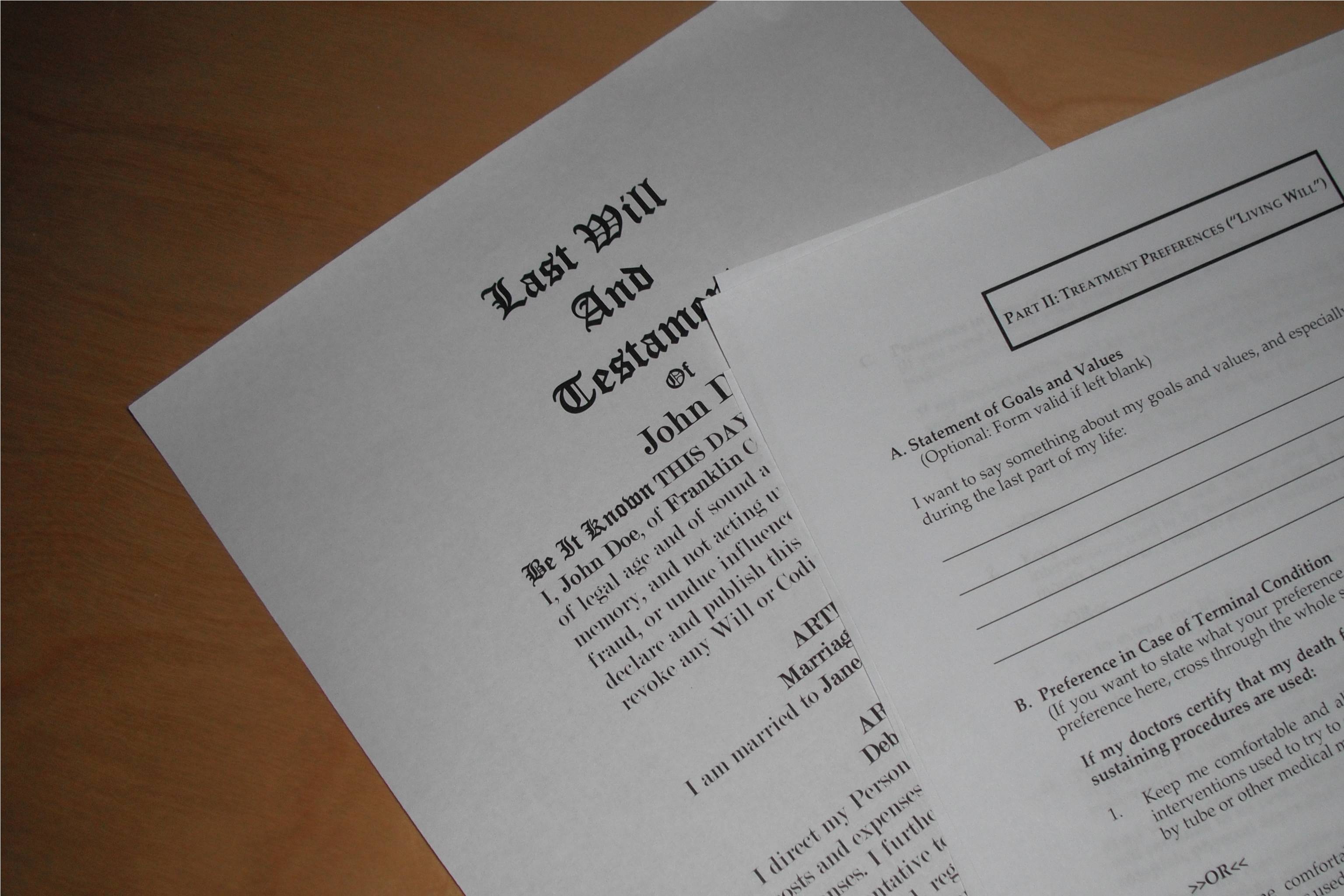Our top-rated tool is like working with a professional every step of the way.
A last will and testament is a legal document that details how a person’s assets and properties will be distributed after their death. This legal document can also detail custody and guardianship details for the surviving children if necessary. Since today’s world also has many technological aspects, digital assets can now also be included in a last will and testament.
When completing a last will and testament, you will need to have a clear idea about what you want to happen to your financial and real estate assets. You should have personal information for the party’s that will be receiving these assets in the event of your death. If you have the information you need, you can create a will without the assistance of a lawyer.
Click here to get started now!
“I am very pleased with FormSwift products and have already recommended them to a number of my friends. The ease of creating documents has saved me countless hours.”
-Carrie L.
"I love FormSwift. There have been so many new documents added since first signing up. They walk you through every step. Great job and thanks for everything you guys do for making this happen."
-John M.
"FormSwift was very easy to use, even for someone who is not very tech savvy like me. Will use again."
-Phil T.
 A last will and testament is not the most cheerful document, but it is the key to ensuring your property is handled properly following your death. It may seem macabre, but in truth it ts never too soon to draw one up Picture this – you die unexpectedly in a car crash. You have no will. Your loved ones, in addition to the pain and sadness of losing you, must now handle the confusion of divvying up your assets. This is, to put it lightly, far from the ideal situation for anyone.
A last will and testament is not the most cheerful document, but it is the key to ensuring your property is handled properly following your death. It may seem macabre, but in truth it ts never too soon to draw one up Picture this – you die unexpectedly in a car crash. You have no will. Your loved ones, in addition to the pain and sadness of losing you, must now handle the confusion of divvying up your assets. This is, to put it lightly, far from the ideal situation for anyone.
If you have any solid last wishes, it’s best to put them in official writing as soon as possible, just to be on the safe side. So, let’s talk about what goes into a last will and testament form.
In order to perform its legal function, a last will and testament template must have the following properties –
· It must identify the “testator” (ther person who is creating the will) and clearly state that the testator is of sound mind and making the enclosed declarations of his or her own free will.
· It must clearly name all beneficiaries and describe each bequest in detail. The level of detail required depends upon the nature of the bequest. For example, if a beneficiary is receiving a property, the will must contain the
· It must contain a statement declaring its supremacy over all other wills and codicils.
· You and two or more witnesses must sign and date the document. Some states also required the signature of a notary public, so you’ll want to check your state’s official website for regulations. Your witnesses must be “disinterested” witnesses, meaning they are not beneficiaries of your will. These signatures MUST appear at the end of the document; by law, any text that follows the signatures of a will’s testator is not considered valid.
Do I need a lawyer?
Technically, a will is executable without a lawyer; however, if you draw up a will from scratch without any input from a pro, you run the risk of making a linguistic or typographical error that ruins everything. A good middle ground is a sample last will and testament form, which you can easily download from the internet. A last will and testament template will contain all the basic components you need in the proper legalese, and your only job is to fill in the blanks.
 For many people, having a last will and testament form in place provides a sense of satisfaction and security. When people consider creating a last will and testament, however, they often jump to conclusions about how the process works. First, many individuals assume that a last will and testament form can only be made legal by working with an attorney. Because of this, people assume that it is too expensive, that they can’t afford to create their last will and testament. The truth is that these assumptions are wrong. In the end, filling out a last will and testament template is something you can do yourself. And, when you look at the ramifications of not having a will in place, it quickly becomes clear that you can’t afford
not
to.
For many people, having a last will and testament form in place provides a sense of satisfaction and security. When people consider creating a last will and testament, however, they often jump to conclusions about how the process works. First, many individuals assume that a last will and testament form can only be made legal by working with an attorney. Because of this, people assume that it is too expensive, that they can’t afford to create their last will and testament. The truth is that these assumptions are wrong. In the end, filling out a last will and testament template is something you can do yourself. And, when you look at the ramifications of not having a will in place, it quickly becomes clear that you can’t afford
not
to.
Dying without a will is known in the legal world as dying “intestate”. Essentially, if you have not made your wishes known and legally binding through a will, then the state will decide how your property is divided. If you have a spouse or legally recognized partner but no children, then he or she will receive all of your property. If you have children, or have no legal partner, the distribution of the estate gets infinitely more confusing. In extreme instances, everything you own could become the property of the state, simply because there was no legally binding will at the time of death.
Now that you know a last will and testament template can be completed without an attorney, should you do it on your own? That answer is determined mostly by your unique situation, and it’s something only you can decide. If your estate is large, your property is diversified or your wishes are highly specific, you may want to consult an attorney regarding your will. However, having a last will and testament form in place at all times is the only way to ensure your wishes are adhered to. You should never let a lack of money for attorney fees prevent you from having a legally-binding last will and testament. Fortunately, sample last will and testament forms and our last will and testament template can help you write a last will and testament that will provide you peace of mind for years to come.
Before you start browsing sample last will and testament forms, make sure you know your state’s specific requirements for a will. In other words, what steps are essential to make a will legal and binding. Different states have different requirements on whether or not a handwritten will is acceptable, how many witnesses you need and if you need a notary. Make sure you meet all of your state’s requirements; otherwise, your will could be bypassed or declared invalid.
In any last will and testament template, it is absolutely essential that you fully identify yourself not just by name, but by date of birth, social security number and address, as well. You also must make it clear that you are in a legal position to make a will; that you are of “sound mind”, that you are a legal adult and that no one is influencing you or forcing you to write it.
When you decide to create your own will, one safe and easy way is to use our professional last will and testament template. It provides you with the security of a tried and true format, as well as the freedom needed to personalize your will as needed. While you will still need to ensure that all state requirements are met, creating your last will and testament using our template is a wonderful way to make sure that those you love will be cared for always.
 What to do with the
assets of a deceased person
is not only an emotionally difficult consideration, but can also be a complex legal issue. By creating a document known as a last will and testament, a person can alleviate some of the stress of this process from their loved ones. Originally, the term “will” referred only to the disposition of an individual’s real property, such a land, after their death. The term “testament” was then used for the disposition of personal property. The terms have now been conflated in order to include both the real and personal property of the deceased, referred to as the testator, in one document. A last will and testament is a particularly stringent document to prepare, as it has a history of being vulnerable to fraudulent influence and mistaken interpretation. In light of this, it is of the utmost importance to prepare a valid last will and testament form during one’s life.
What to do with the
assets of a deceased person
is not only an emotionally difficult consideration, but can also be a complex legal issue. By creating a document known as a last will and testament, a person can alleviate some of the stress of this process from their loved ones. Originally, the term “will” referred only to the disposition of an individual’s real property, such a land, after their death. The term “testament” was then used for the disposition of personal property. The terms have now been conflated in order to include both the real and personal property of the deceased, referred to as the testator, in one document. A last will and testament is a particularly stringent document to prepare, as it has a history of being vulnerable to fraudulent influence and mistaken interpretation. In light of this, it is of the utmost importance to prepare a valid last will and testament form during one’s life.
Since statutes vary from state to state, there is no universal last will and testament template. However, all wills must adhere to certain requirements and formal components in order to be validated in probate court. First, a testator is required to be of a certain age. In some states, the minimum age for making a will is eighteen years or less. In others, a person must be at least twenty-one years of age. In a few states, a married person may make a will at any age. Second, in order to complete a last will and testament form, the testator must be of “sound mind.” In its legal application, this phrase simply means that the testator must have enough mental capacity to understand the extent of his own property, the persons receiving his property, and the disposition which he is making of his property.
Unless the will is completely hand-written, it must also be witnessed by at least two disinterested parties. This means that the witnesses should not be persons who are named in the will as recipients, or devisees. The testator must also sign the will; a variety of signature methods are legally acceptable including rubber stamp or mark. The signature must be made by the testator, or someone who is expressly designated and authorized by the testator to sign in their place.
A sample last will and testament may be composed as follows. In the first paragraph the name and address of the testator is identified. The following paragraph cancels any previous wills or codicils made by the testator. Then, the testator designates a person or persons to direct their affairs once they are deceased. This person is called the executor of the will. The paragraphs following directs the executor to disburse the testator’s property to a list of devisees accordingly. Proceeding the signature, there is a paragraph confirming that the will has been signed by the testator, which is then followed by the signatures of two witnesses. A last will and testament is revocable during the testator’s lifetime, and remains inoperative until the time of their death.